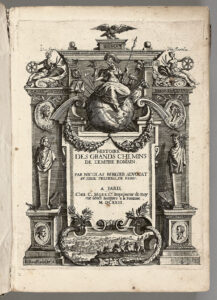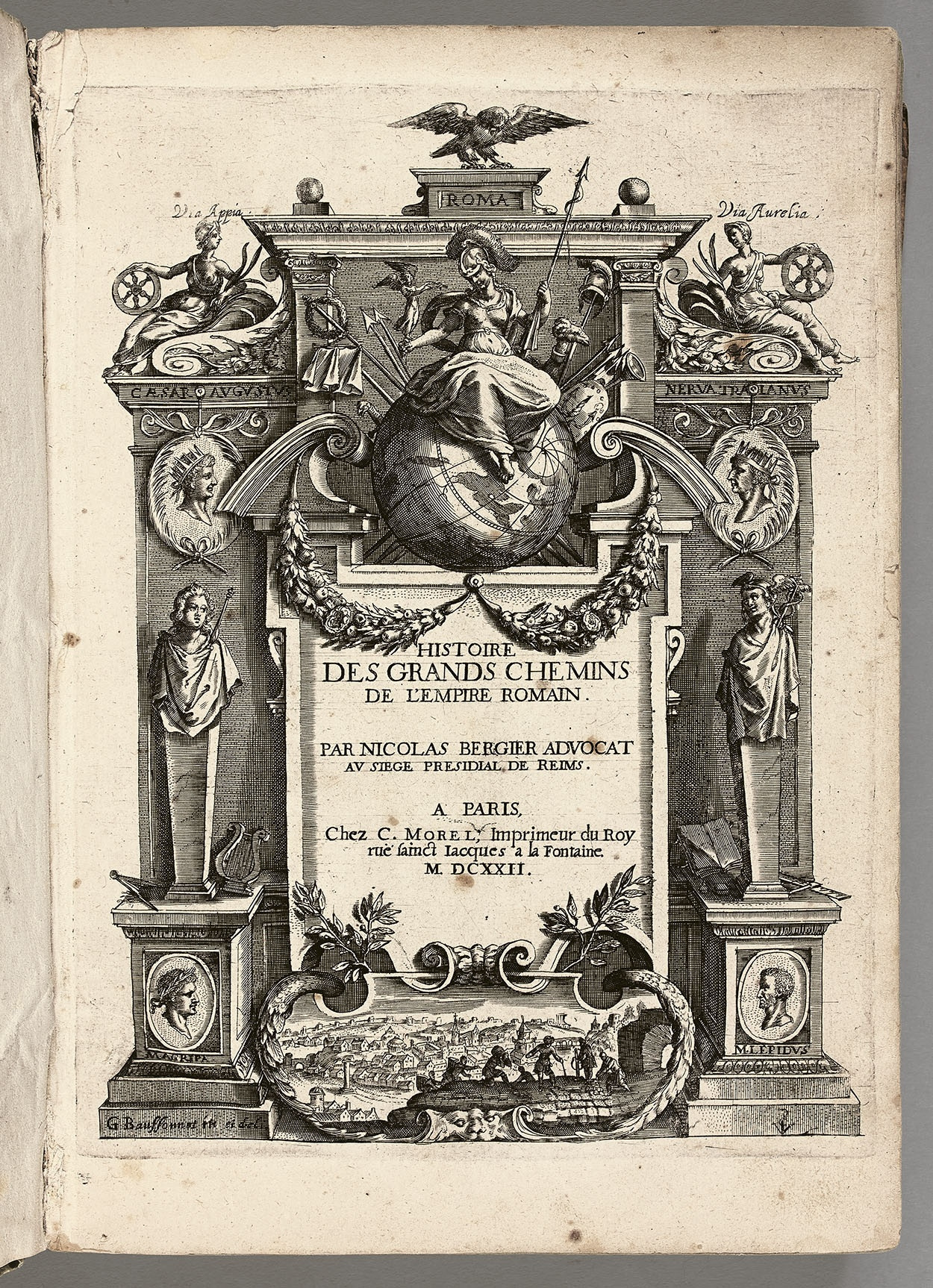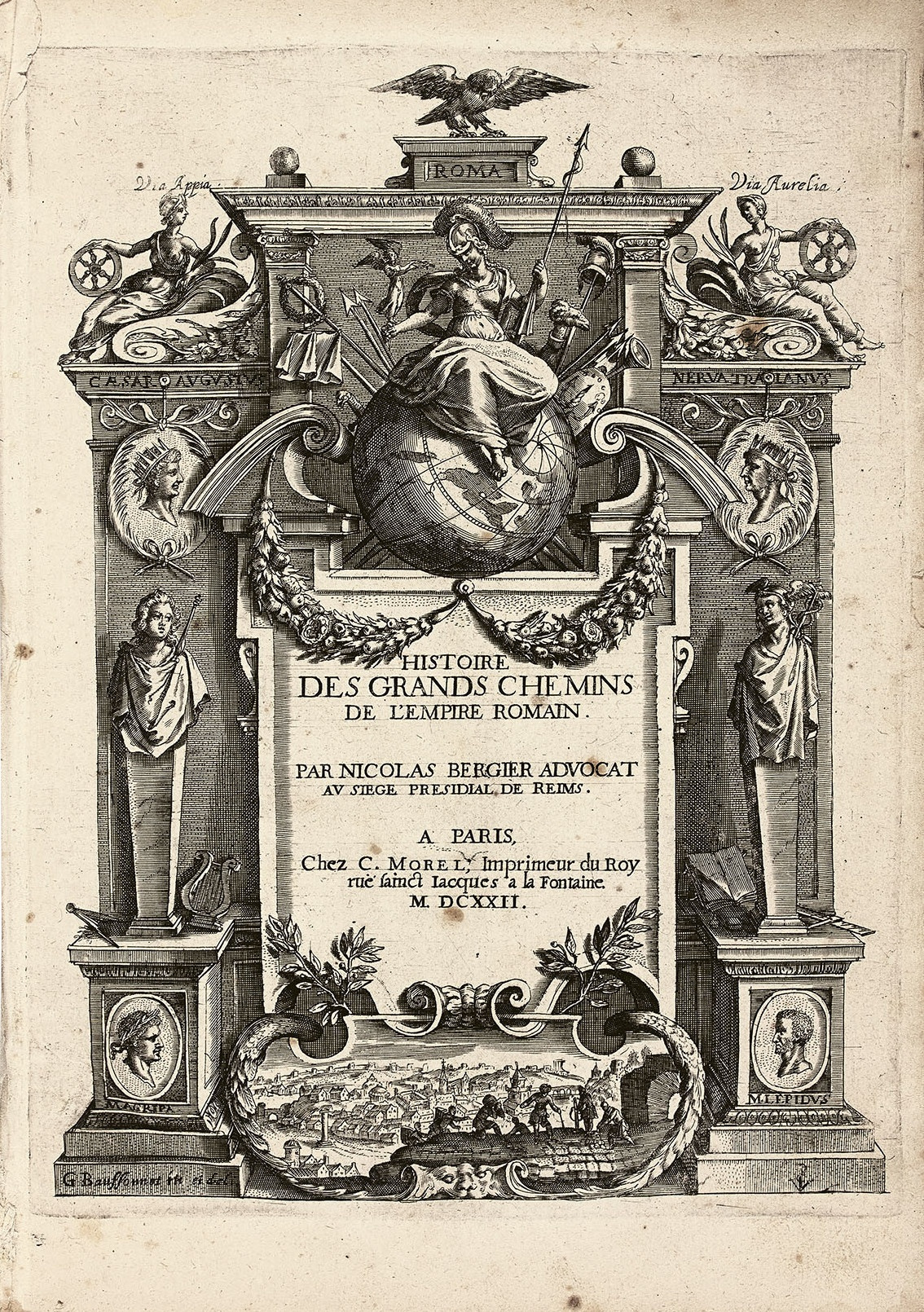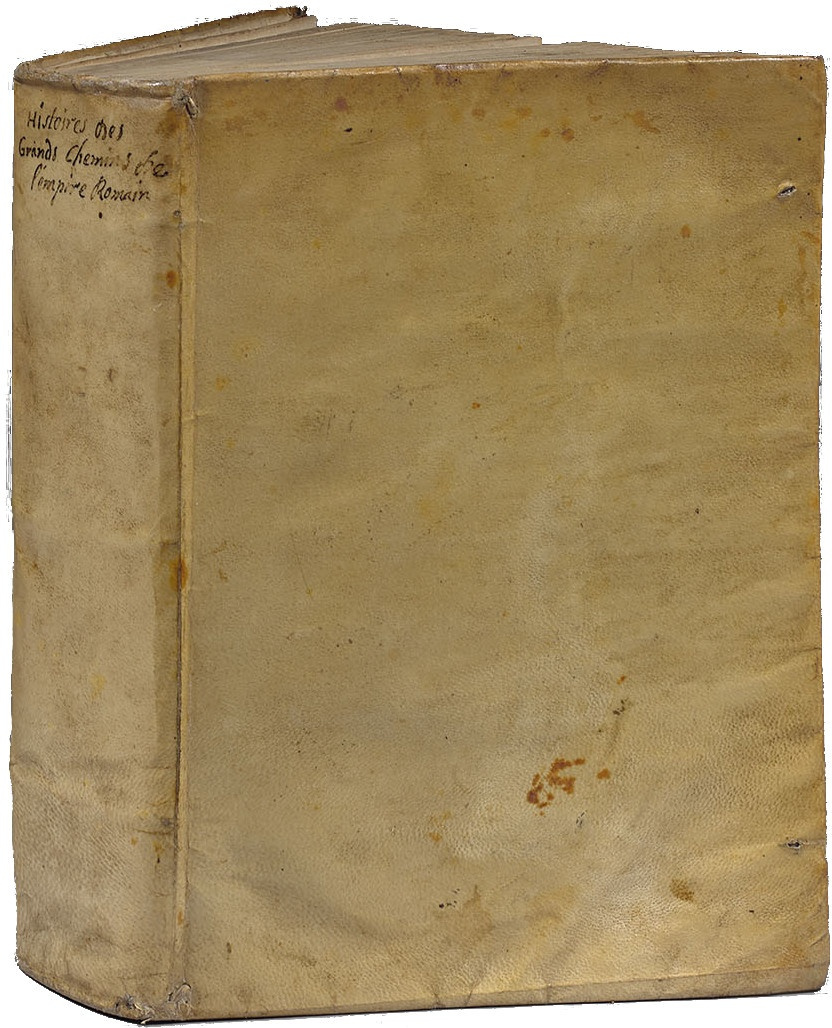Paris, C. Morel, 1622.
4to [244 x 171] of (22) ll. including 1 engraved frontispiece, 112 pp., (4), pp. 113 to 295, (2) ll., pp. 297 to 564, (4), pp. 565 to 768, (4), pp. 769 to 856, (14) ll. Some foxing. Full limp vellum, flat spine with the handwritten title at the hêd, remains of ties. Contemporary binding.
First edition illustrated with an engraved frontispiece of the most famous book about « the roads and grêt paths of the Roman Empire ».
Nicolas Bergier (1567-1623) was first a lawyer in Reims. He had the opportunity to become close friend with Dupuy and Peiresc ; he was supported by the latter and with the help of his advices and his documents, he began the study of Roman roads. He also deserved the respect and friendship from the president of Bellièvre.
« The name of Nicolas Bergier is particularly known among scholars thanks to his ‘History of grêt roads of the Roman Empire’: he started it, supported by his friend Peiresc, who even gave him various pieces necessary to his work. It was published for the first time in 1622, tall 4to. This work was generally respected and sought-after; but as it became rare, Jên-Léonard, a bookseller and printer in Brussels, worked on an edition made from a copy corrected by the author, and published it in Brussels, 1728, 2 4to volumes, in which he joined the Itinerary map of Peutinger, reduced by George Hornius, and noticing the distances between towns and places of the Roman Empire. This work, necessary for all the persons seriously studying Roman history, contains plenty of peculiar things. » (Michaud).
Bergier listed all the roads of the Roman Empire, as well as temples, sepulchers, palaces, houses, gardens running alongside them. The description of the « military roads of Rome » occupys an important part of the work, with the « Temples, Palaces, triumphal arches, racecourses, sepulchers & other superb buildings lined up in such a continual row, that the strangers going to Rome saw them so bêutiful and so frequent that they thought they were in the city long before they had rêched the gates. ». (advertisement).
The work is illustrated with a superb allegorical title with architecture framings, dedicated to King Louis XIII.
A very attractive copy preserved in its contemporary pure limp vellum binding.
Provenance: Ch. Cottier, Member of the Legion of Honor, Judge at the Court of Appel of Nîmes with an engraved ex libris.
See less information




